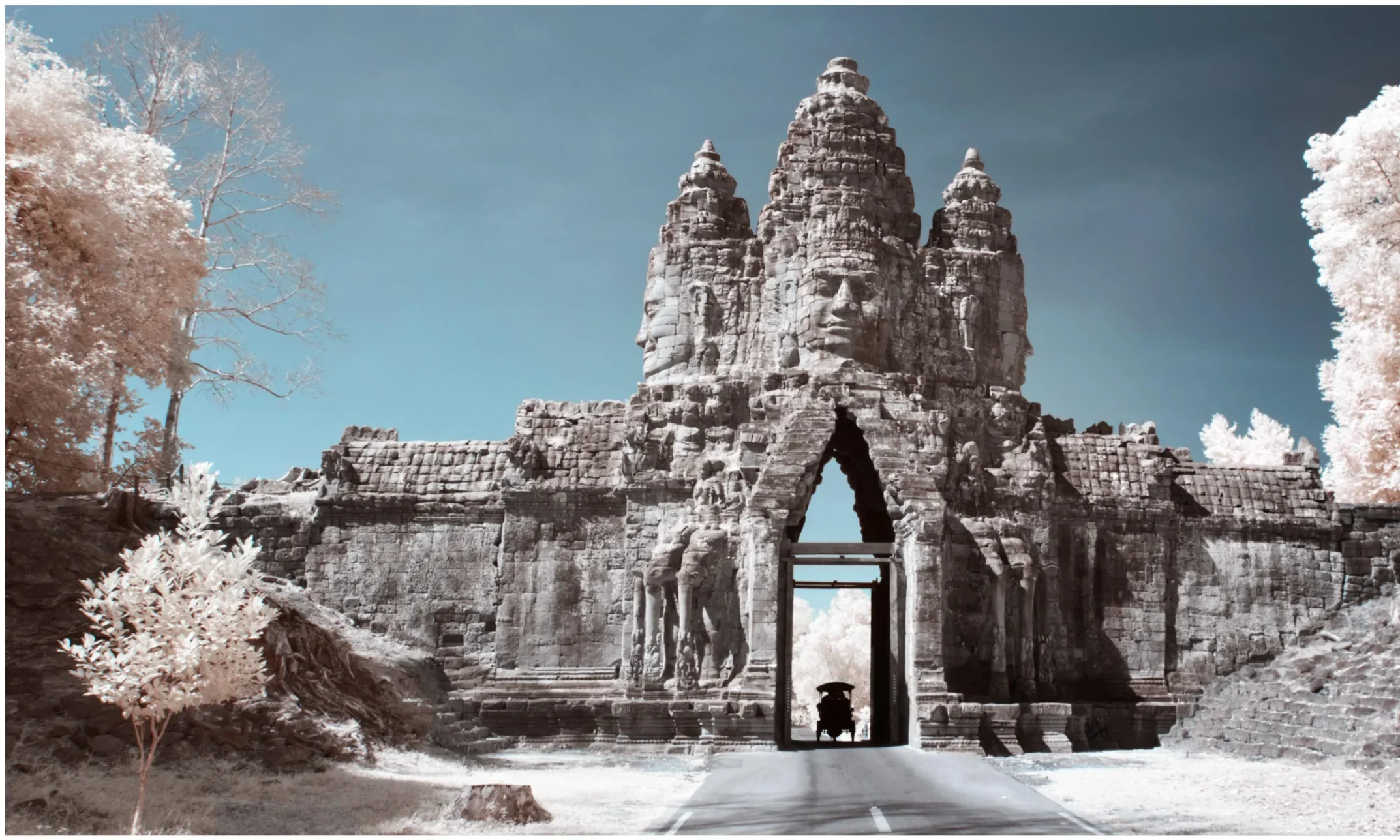Siem Reap History

Very little information is available regarding the historical background of Siem Reap. There are limited written records for reference. After the period of the Khmer Empire, Cambodia experienced multiple invasions by Thailand, which maintained suzerainty over Cambodia for an extended duration. The history of Siem Reap is intricately connected to Cambodia’s struggle for territorial sovereignty.
A well-known narrative concerning Siem Reap’s past involves King Ang Chan, who governed Cambodia during the 16th century. Following a coup by his brother, King Ang Chan was compelled to seek refuge in Thailand, then known as “Siam.” While in Thailand, King Maha Chakrapat denied Ang Chan the opportunity to return and reclaim his throne. In a clever maneuver, Ang Chan promised to capture a legendary white elephant that had piqued the interest of the Thai King, thereby securing permission to return. Upon his return to Cambodia, Ang Chan assembled an army and successfully reclaimed his throne. When the Thai King later demanded the coveted white elephant, Ang Chan refused, thereby ending the period of suzerainty. In response, Maha Chakrapat launched an invasion, but Ang Chan triumphed over the 10,000-strong Thai forces. He subsequently named the site of his victory “Siem Reap,” which translates to “the flat defeat of Siam.”
French Protectorate
Between the 16th and 19th centuries, Cambodia experienced a significant decline, often referred to as the “dark ages” of the nation, during which it lost substantial territories to neighboring Thailand and Vietnam. It was not until King Norodom successfully negotiated a treaty with the influential French that Cambodia began to reclaim some of its lands. Siem Reap, however, faced an uncertain future as the French engaged in both conflict and diplomacy with Thailand and Vietnam for several years. From 1795 until 1907, Siem Reap, along with Battambang and Sisophon, was governed by the Siamese administration known as Inner Cambodia, until the province was ultimately ceded to French Indochina.
Rediscovering Angkor
The French rediscovery of the Angkor temples was pivotal in liberating the province and city from Thai control. In 1901, the École Française d’Extrême Orient (EFEO) initiated its long-standing association with Angkor by financing an expedition to the Bayon in Siam. The EFEO undertook extensive clearing and restoration of the entire site, uncovering many surrounding temples in the process. That same year marked the arrival of the first tourists to Angkor, with an unprecedented total of 200 visitors within three months. Prior to this, what is now known as “Siem Reap City” was merely a small rural settlement near Tonle Sap Lake.
However, with the French’s efforts, Angkor was ‘rescued’ from the encroaching jungle and began to reclaim its significance in the contemporary world. The historical significance of the region, coupled with its development potential, prompted the French to invest considerable time and resources in Siem Reap. The allure of Angkor Wat and the establishment of the first hotel, The Grand Hotel d’Angkor, in 1932, further stimulated tourism in the area. The legacy of French influence remains evident in Siem Reap today, particularly in the French-colonial architecture found in the city center, as well as in the substantial French business investments and the notable expatriate community.
Period of the Khmer Rouge
World War II and the tumultuous era of the Vietnam War involving the United States had a profound destabilizing impact on the entire region. In this context, Cambodia’s then-King Norodom Sihanouk capitalized on the situation to secure independence from French colonial rule in 1953. This was followed by a period of relative prosperity for Siem Reap and Cambodia at large, which lasted until Sihanouk’s ousting in 1970. The subsequent Lon Nol government, however, proved to be erratic, leading to a decline in its authority and inadvertently bolstering the Khmer Rouge movement.
Upon seizing power, the Khmer Rouge isolated the nation from foreign influences and forcibly relocated urban populations to rural areas to establish an agrarian peasant society. A significant number of educated individuals were either tortured, executed, or compelled to flee the country. The Khmer Rouge abolished the concept of money and currency, resulting in a complete economic collapse. It is estimated that approximately 2 million individuals lost their lives during the Khmer Rouge regime due to its catastrophic social engineering policies and widespread executions.
Siem Reap Nowaday
Siem Reap has experienced a remarkable resurgence in the relatively short span of peacetime, achieving over 2 million annual tourist visits within just 15 years. The nation has rebranded itself as “The Kingdom of Wonder,” prominently featuring the silhouette of Angkor Wat in its logo. Consequently, Siem Reap has emerged as a major attraction in Asia, with a noticeable increase in investment occurring monthly. While some remnants of the old French colonial architecture remain, the most striking developments are the modern amenities and luxury hotels that adorn the narrow streets.
Recently, Siem Reap garnered international attention due to a significant archaeological find in the Kulen Mountains. The discovery of the vast ancient royal city of Mahendraparvata, now recognized as potentially the world’s most significant pre-industrial city, has been made. Although it is premature to determine if this site will eventually compete with the allure of Angkor Wat as a tourist destination, its historical importance is indisputable, further enhancing the region’s appeal.
Siem Reap serves as a vital historical nexus, reflecting pivotal changes and developments throughout various periods of Cambodian history. It is increasingly becoming essential to Cambodia’s future, as tourism plays a crucial role in the ongoing recovery of the nation and its populace.
Cambodia Guide
-
Preah Vihear Province
-
Tonel Sap
-
Siem Reap Province
-
Cambodia Seasons
-
Mekong River
-
Battambang Province
-
Kampot
-
Sihanouk Ville
-
Phnom Penh: The campital city of Cambodia
-
National Religion of Cambodia - Buddhism
-
The History of Cambodia
-
Introduction to Cambodia
-
Public Holidays in Cambodia
-
Best Time to Visit Cambodia
